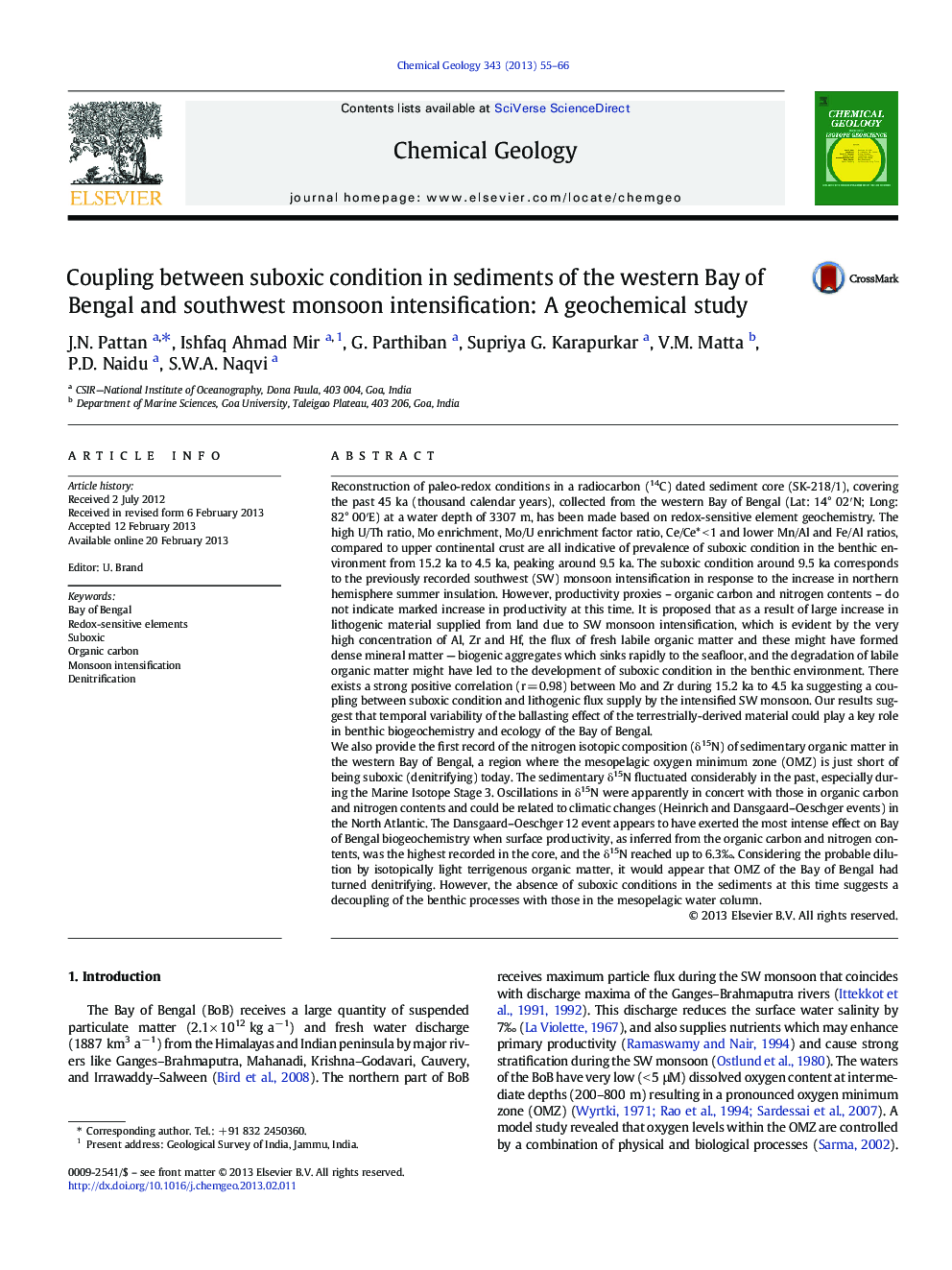| کد مقاله | کد نشریه | سال انتشار | مقاله انگلیسی | نسخه تمام متن |
|---|---|---|---|---|
| 4698997 | 1637625 | 2013 | 12 صفحه PDF | دانلود رایگان |
Reconstruction of paleo-redox conditions in a radiocarbon (14C) dated sediment core (SK-218/1), covering the past 45 ka (thousand calendar years), collected from the western Bay of Bengal (Lat: 14° 02′N; Long: 82° 00′E) at a water depth of 3307 m, has been made based on redox-sensitive element geochemistry. The high U/Th ratio, Mo enrichment, Mo/U enrichment factor ratio, Ce/Ce* < 1 and lower Mn/Al and Fe/Al ratios, compared to upper continental crust are all indicative of prevalence of suboxic condition in the benthic environment from 15.2 ka to 4.5 ka, peaking around 9.5 ka. The suboxic condition around 9.5 ka corresponds to the previously recorded southwest (SW) monsoon intensification in response to the increase in northern hemisphere summer insulation. However, productivity proxies – organic carbon and nitrogen contents – do not indicate marked increase in productivity at this time. It is proposed that as a result of large increase in lithogenic material supplied from land due to SW monsoon intensification, which is evident by the very high concentration of Al, Zr and Hf, the flux of fresh labile organic matter and these might have formed dense mineral matter — biogenic aggregates which sinks rapidly to the seafloor, and the degradation of labile organic matter might have led to the development of suboxic condition in the benthic environment. There exists a strong positive correlation (r = 0.98) between Mo and Zr during 15.2 ka to 4.5 ka suggesting a coupling between suboxic condition and lithogenic flux supply by the intensified SW monsoon. Our results suggest that temporal variability of the ballasting effect of the terrestrially-derived material could play a key role in benthic biogeochemistry and ecology of the Bay of Bengal.We also provide the first record of the nitrogen isotopic composition (δ15N) of sedimentary organic matter in the western Bay of Bengal, a region where the mesopelagic oxygen minimum zone (OMZ) is just short of being suboxic (denitrifying) today. The sedimentary δ15N fluctuated considerably in the past, especially during the Marine Isotope Stage 3. Oscillations in δ15N were apparently in concert with those in organic carbon and nitrogen contents and could be related to climatic changes (Heinrich and Dansgaard–Oeschger events) in the North Atlantic. The Dansgaard–Oeschger 12 event appears to have exerted the most intense effect on Bay of Bengal biogeochemistry when surface productivity, as inferred from the organic carbon and nitrogen contents, was the highest recorded in the core, and the δ15N reached up to 6.3‰. Considering the probable dilution by isotopically light terrigenous organic matter, it would appear that OMZ of the Bay of Bengal had turned denitrifying. However, the absence of suboxic conditions in the sediments at this time suggests a decoupling of the benthic processes with those in the mesopelagic water column.
► Suboxic condition occurred at 9.5 ka in the western Bay of Bengal sediment.
► Southwest monsoon intensified at 9.5 ka and is associated with high Al, Zr and Hf content.
► There is a linkage between southwest monsoon intensification and reducing conditions.
► Degradation of labile organic matter might have caused reducing conditions.
Journal: Chemical Geology - Volume 343, 8 April 2013, Pages 55–66
